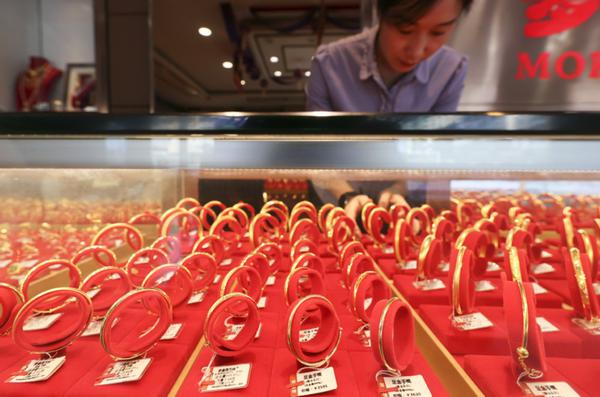
The discovery of a new type of stem cell in the brain could usher in better treatments for the deadliest brain tumor. UCSF scientists have discovered a stem cell in the young brain that's capable of forming the cells found in tumors. The breakthrough could explain how adult brain cells take advantage of developmental processes to instigate the explosive growth seen in deadly brain cancers like glioblastoma.
They made the discovery while taking a broad genomic survey of human brain cells from the first two decades of life. The findings appear Jan. 8 in Nature .

Many brain diseases begin during different stages of development, but until now we haven't had a comprehensive roadmap for simply understanding healthy brain development. Our map highlights the genetic programs behind the growth of the human brain that go awry during specific forms of brain dysfunction." Arnold Kriegstein, MD, PhD, professor of neurology at UCSF and co-corresponding author of the paper The study measured gene expression in cells taken from donated brain samples.
The researchers kept track of the original location of each cell to help explain how the brain creates connections. In addition to the discovery of an early stem cell that could explain the genetics of glioblastoma in adulthood, the data contained hints about the origins of autism. The researchers have published the data as a resource for the field to use for understanding a wide range of other brain disorders.
"Our study paints one of the most detailed pictures of human brain development," said Li Wang, PhD, postdoctoral researcher in Kriegstein's laboratory and co-first and co-corresponding author of the paper. "Theories based on observations in the clinic and laboratory can now be tested against this hard data, and we're excited to see what else the field can do with it." Samples reveal a treasure trove Most studies of the developing brain are carried out in animal models, which are at best loose proxies for the human brain.
The team, also led by co-first author Cheng Wang, PhD, and co-corresponding author Jingjing Li, PhD, wagered that valuable new insights could be made by studying the human brain itself. They worked with the National Institutes of Health's NeuroBioBank and local hospitals associated with UCSF to obtain brain samples. These samples, donated from 27 individuals from early life through adolescence, were sent to UCSF and analyzed for gene expression in thousands of individual cells.
Gene expression refers to how DNA, stored in chromosomes, is copied into RNA – short-lived genetic messages – which are then used as a template for building proteins. By measuring RNA, the researchers could peer into the behavior of those cells. "RNA degrades quickly, and you need to have very pristine tissue in order to get usable data," Kriegstein said.
"It was a huge advance for Li and his colleagues to perform such high-resolution genomic tests on this tissue, and we thank the community for supporting such critical research by donating this precious tissue." Related Stories Yale study identifies molecular mechanism behind some lissencephaly disorders Study identifies best imaging methods for evaluating brain tumor response in melanoma patients Study links glymphatic system damage to vascular dementia The researchers analyzed which parts of each chromosome were available for expressing genes in each cell. They also labeled where each cell had been taken from in the brain.
The scientists focused on cells taken from the front and the back of the cerebral cortex, regions that in humans are responsible for learning, memory and language. "RNA alone doesn't tell the entire story of a cell's behavior," Wang said. "By measuring RNA and chromatin state at the same time in the same cell and then mapping each cell back into the brain's structure, we could begin to understand the full story of brain development.
" A mélange of autism risk genes emerge in the developing brain Autism isn't caused by a single gene mutation , but rather by the combination of many gene mutations. The researchers found that many of the genes that correlate with autism were turned on by immature neurons well before any symptoms would have manifested. Mutations in these genes, they said, could interfere with the growth of the young brain, leading to autism.
"These programs of gene expression became active when young neurons were still migrating throughout the growing brain and figuring out how to build connections with other neurons," Wang said. "If something goes wrong at this stage, those maturing neurons might become confused about where to go or what to do." Since the study didn't look at tissue from individuals with autism, it's still unclear exactly how autism unfolds in the brain.
But the data link many genetic variations associated with autism to the cells that serve as the building blocks for the growing brain. "People talk about connecting the dots to come up with a picture of how autism emerges, and in a sense, we've identified many of the dots driving autism during a critical point in development," Kriegstein said. "This part of development could be worthy of further investigation for untangling all the mysteries of autism.
" Could a program for early brain growth be coopted for tumor growth later in life? As the researchers sifted through their data, Wang noticed a group of stem cells that seemed poised to do something unusual. These immature cells had begun to express genes normally found across three mature cell types. Many stem cells in the developing brain mature into just one cell type, like a neuron or a support cell.
Some can mature into two types. But these stem cells could mature into three lineages: two types of support cells known as glia, and one type of neuron. The researchers thought this ability might enable it to give rise later in life to glioblastoma tumors, which contain three similar cell types.
"Glioblastoma has been challenging because it's so heterogeneous," Kriegstein said. "Li found a precursor capable of making all three glioblastoma cell types." The discovery validates a widely held theory that tumors hijack genetic growth programs for out-of-control growth in adulthood.
And it may provide a new entree for treating glioblastoma at its source: the "cancer stem cell." "By understanding the context in which one stem cell produces three cell types in the developing brain, we could be able to interrupt that growth when it reappears during cancer," Wang said. University of California - San Francisco Wang, L.
, et al . (2025). Molecular and cellular dynamics of the developing human neocortex.
Nature . doi.org/10.
1038/s41586-024-08351-7 ..















